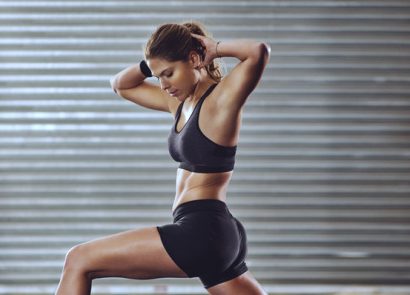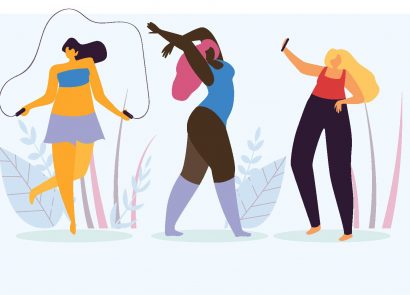Speed work is pretty hard, let’s be honest, especially in the summer heat when you’re wilting under the afternoon rays. If only there were a way to improve as a runner without having to make muscles burn more and lungs work harder. Good news – here are six ways to do just that!
-
BE DYNAMIC Still doing the static warm-up you learnt at school? Dynamic exercises – taking joints through a full range of motion – are the only moves to do before a run. These moves will crank up your heart rate and ready muscles for exercise. “It goes against everything we were once told about stretching but dynamic movements will prevent injuries and improve performance,” says George Anderson, expert at intelligent-running.com.
The answer: Do the runner-friendly ‘high knee drill’ by standing tall and leaning forwards from the ankle. Lift your left knee towards your chest as you swing your arms in a running motion. Repeat on the right side. Continue alternating quickly, travelling 10-20m. -
TRY TOE-GA Poor foot strength causes running niggles. The toes are used to push off the ground and, when they don’t work effectively, stress is placed on tissue further up the leg. “If you spend most of your day in shoes, your toes won’t get a chance to wiggle and flex,” adds Jamie Page at Vivobarefoot. “Toe-ga exercises not only mobilise the big toe and improve ankle flexibility, but also boost brain-to-foot connection.” Essential for speedy movements.
The answer: The ‘scrunch’ exercise will improve foot flexibility. Stand upright with 90 percent of your bodyweight on one foot. Put the other foot out in front of you and fold your four toes under the sole of the foot, leaving just the big toe out. Now press the four toes into the ground. Repeat on the other foot. -
SWING LOW Think all a runner needs is a strong set of pins? Think again. The arms must move efficiently, too. The arms and legs move in unison, so a speedy arm swing creates the tempo of a quick leg turnover. “The key thing is to swing your arms in a parallel motion,” says Sandy Macaskill, of Barry’s Bootcamp. “Don’t let your hands cross the mid-line of your body. That rotates your shoulders and wastes energy.”
The answer: Practise arm swinging by standing tall and pumping your arms in a running motion. As you speed up, pump your arms more aggressively but keep your shoulders stable. -
RELEASE TENSION Next time you finish a run, take a few minutes to stave off stiffness with a myofascial massage. Running can cause fascia – soft tissue that surrounds the muscle – to get stuck.
Myofascial release techniques – applying pressure to the fascia tissue – will loosen it up and increase your range of motion. “Breaking the adhesions between the fascia and muscle will allow more efficient muscle contractions when you next run,” says Tim Allardyce, Physiotherapist at Surrey Physio (surreyphysio.co.uk). “Self myofascial massage is often performed using a foam roller.”
The answer: Grab a foam roller and massage problem areas, such as the iliotibial band (ITB), hamstrings, quads and calves. To loosen the thick ITB tissue, lay the foam roller on the floor. Lie on it with the roller under the side of your leg, and roll it up and down the side of your leg. -
TAKE A BREATH Breathing may seem like a no-brainer but studies show most runners don’t use their full lung capacity. Less air equals less oxygen for your muscles and a reduced performance. Fortunately, you can condition the muscles of the diaphragm for fast running. “The answer is to train your lungs,” agrees Macaskill. “The key thing is to practise getting more oxygen into the body.”
The answer: Stand and put one hand on your belly. Place the other hand on your chest. Now, take a deep breath and fill your lungs with air. The hand on your stomach should rise but the one on your chest should stay still. -
CARVE YOUR CORE Standing tall? You should be – strong core muscles make running easier. Core exercises, such as those used in yoga and Pilates, are essential for runners,” agrees Danielle Collins, founder of Face Yoga Method, “A sturdy core will improve your running posture, meaning you are less susceptible to injury. It can also up your endurance and speed.”
The answer: The ‘hundred’ exercise will work your tummy. To do it, lie flat on the floor with arms by your side and legs hip-width apart. Lift your arms off the floor, and slightly raise the neck and chest. Start to pulse the arms up and down.




















